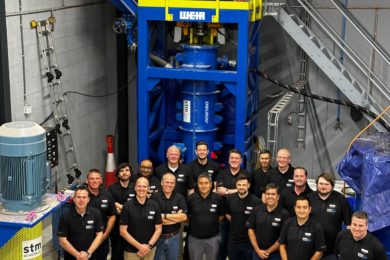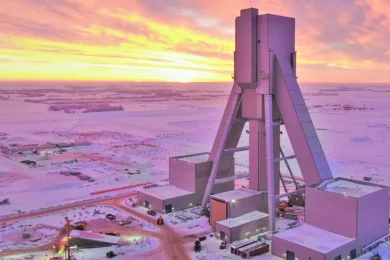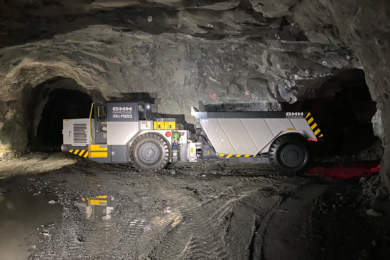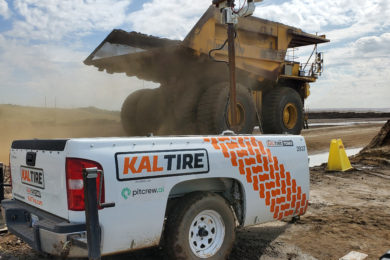In its 2022 Annual Report, released today, Weir Group reviews its performance from several angles – financially, strategically and of course from a sustainability standpoint. It says with large greenfield expansion projects slow to convert, miners met demand by accelerating production from existing assets and by developing harder and more complex ore deposits. Group revenue was 21% higher on a constant currency basis as Weir converted its order book. Adjusted operating profit was 25% higher than in the prior year on a constant currency basis.
Weir adds: “This, coupled with a growing installed base and the effects of declining ore grades, drove record demand for our aftermarket spares and expendables. In OE, we won market share as miners ordered Weir solutions to debottleneck and improve the efficiency of existing assets. In particular, we saw strong demand for our industry-leading Warman® mill circuit pumps that have significant productivity and sustainability benefits relative to competitor solutions.”
It says demand was strong in all regions, with North America supported by particularly high levels of activity in the Canadian oil sands and Asia Pacific seeing a strong recovery in Australia. “Our growing geographical footprint allowed us to capitalise on new demand in ASEAN countries as miners made strategic investments in the region, such as in nickel expansion projects in Indonesia. Our new service centre in Kazakhstan enabled us to support growing demand from customers in Central Asia, including a series of recently developed copper projects.”
On that subject, the opening of Weir’s new 3,300 m2 supercentre in Almaty, Kazakhstan was a strategically important milestone, providing engineering and service expertise to enhance Weir customer support in the region. The £1 million investment is core to its localisation strategy and supports its growth plans in Central Asia. Weir adds: “We are also investing in the development of our employees to support our growth and the growth of our customers. The new facility provides our full suite of service capabilities to customers in Kazakhstan, as well as new projects in Uzbekistan.”
In 2021, Weir announced plans to expand its foundry capacity in China to support the increased demand for ESCO ground engaging tools (GET). The ground-breaking ceremony at the 16.5-acre site in Xuzhou’s industrial zone on 27 July, 2022 signified an important milestone in advancing its growth plans. This multi-year, US$60 million+ investment increases Weir’s foundry capacity in China by a third, providing a strong platform for growth in mining and infrastructure markets around the world. Production is scheduled to start late 2024, ramping up to full production in 2025. The expansion provides personal development and growth opportunities for existing talent, while creating additional jobs in the local community.
A major part of Weir’s offering is bringing its own solutions together with those its strategic alliance partners to enhance its customer value proposition. New partnerships with Eriez and Swiss Tower Mills (STM) Minerals it says are enabling it to redefine the mining mill circuit so customers can use less energy, use water wisely and create less waste during minerals processing. Weir has just announced the completion of the STM Minerals AG vertical stirred mill commissioning at the Weir Technology Hub in the Netherlands. This is the latest addition to Weir’s proven energy efficient comminution and classification solutions for customers.
Regarding Eriez, the combination of pumps, cyclones, classification equipment, and other mill circuit products supplied by Weir Minerals, along with Eriez’ game-changing HydroFloat, StackCell®, columns, and sparging systems, allows owners to take advantage of well-matched equipment designed and tested as a system. This makes Weir a natural fit for contributing to Coarse Particle Flotation (CPF) flowsheets.
These partnerships build on its long term collaboration with ANDRITZ, which supplies proven separation and dewatering technologies including thickeners, filter presses, centrifuges, and vacuum belt filters under the IsoDry brand, thus enabling Weir Minerals to offer complete tailings solutions to its customers along with its own Warman® and GEHO® pumps, coupled with its Cavex® hydrocyclones. Weir Minerals’ Integrated Solution for thickened tailings management and transportation – where the waste stream is dewatered to remove up to around 85% of the water, which is then recycled back to the process – can create a stable tailings stream that can be moved with GEHO positive displacement pumps.
Then there is Weir Minerals’ proprietary TerraFlowing™ technology, which refers to a dewatering process that transforms tailings into a resource. This process has been developed to address both the value proposition of tailings inherent in the tailings, and tailings storage. It incorporates a two-stage cyclone dewatering process followed by centrifugation of the final stage of cycloning overflow. Three dewatered tailings streams are produced: a primary cyclone underflow, a secondary cyclone underflow and a centrifuge pulp. These three streams can be combined or used in different configurations.
Weir has also successfully integrated Motion Metrics, acquired at the end of 2021, developing the combined ESCO/Motion Metrics offer to deliver significant safety and efficiency benefits for customers. “We also made excellent progress in expanding the technology to other applications in the mine, such as ore sorting and characterisation, that have the potential to radically improve the sustainability footprint of mining.” Weir has outlined a £500 million-plus emerging digital market opportunity for Motion Metrics, with much of this hinged on rugged machine vision technology, its sophisticated digital platform and the ability to add ore sensing to its offering.
Motion Metrics has chosen to incorporate hyperspectral imaging into its PSD mix. Chris Carpenter, VP of Technology for Weir ESCO recently explained to IM: “When you think about ore characterisation, we are just moving from a visual spectrum base with Motion Metrics vision-based systems to the expanded light spectrum for gathering data and making decisions. This is all being built on the established digital platform the company has.” The company has settled on a BeltMetrics installation for its first trial, with the sensing solution positioned above a conveyor that is directly after the crusher in the flowsheet.
Weir ESCO truck bodies provide faster cycle times, improved material capture, greater playload retention, reduced carryback and can be custom configured. Weir ESCO GET for large mining machines sees highly engineered technology improve productivity through extended wear life, increased safety and reduced energy consumption. For GET Weir ESCO has introduced a new digital supply chain tool, and developed a digital configurator, which customers will use when ordering mining attachments. Both systems it says will improve customers’ buying experience, while also driving operational efficiency.
On the digital side, Weir Minerals last year announced a new partnership with XMPro, a digital twin platform, to enable intelligent equipment and services and support miners to achieve higher performance while also reducing the environmental footprint of their operations, the mining OEM says. The XMPro platform – now a part of Weir’s Synertrex® digital ecosystem – is facilitating the delivery of event intelligence, predictive analytics and real-time insight.
Looking at sustainability – another area is worth mentioning – Weir’s ongoing progress with its HPGR technology. “We are analysing our product footprint to help quantify the difference in emissions between our most efficient technologies and their business-as-usual alternatives using a comparative sustainability impact measure known as Scope 4 – avoided emissions. Our Enduron® high pressure grinding rolls (HPGR) is the first technology in which we have done this. We previously identified energy savings up to 40%, relative to tumbling mills – a Scope 4 avoided emissions benefit. HPGR also doesn’t use grinding media, which have significant embodied emissions, leading to a further CO2e saving. Taken together, a single HPGR can save up to 16,000 t of CO2e per year. Our next step is to confirm our Scope 4 reporting framework and seek independent verification.”
Of some 350 HPGR units installed globally, 92 of these were from Weir, and its influence in this market is growing. A good example of one of its major HPGR customer partners is IAMGOLD at the new Côté Gold project in Ontario. The Côté team has visited other Weir HPGR sites to leverage learnings for the new processing operation which will include a 37,200 t/d crush/HPGR/grind/leach/CIP processing plant with average recoveries of 91.8%, and recovery by gravity of 23%. The HPGR and grinding target final product size is P80 at 100 μm. HPGR maintenance and roll resurfacing will be supported by the Weir facility in Sudbury and Weir engineers are already at site for installation, commissioning and training.










